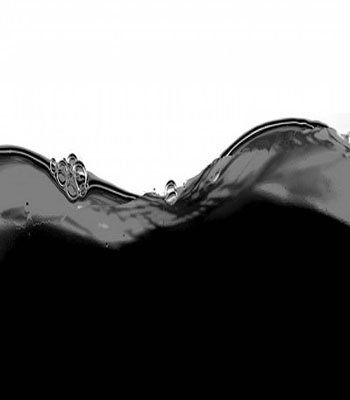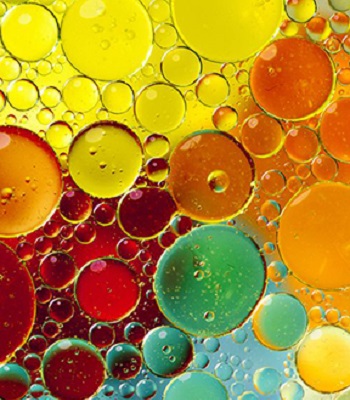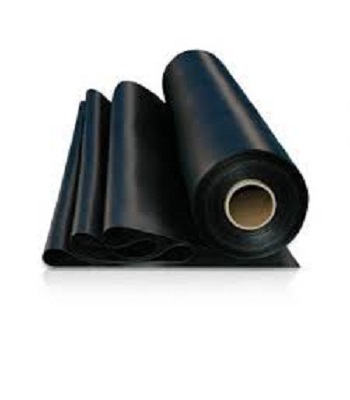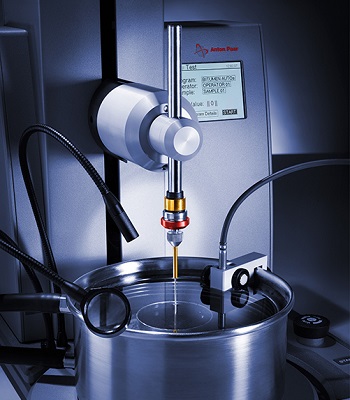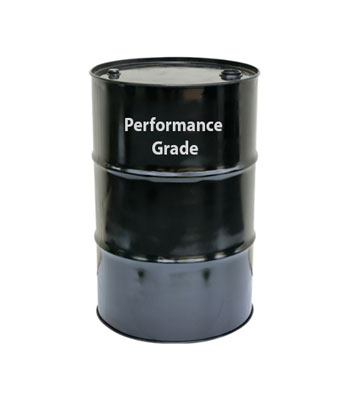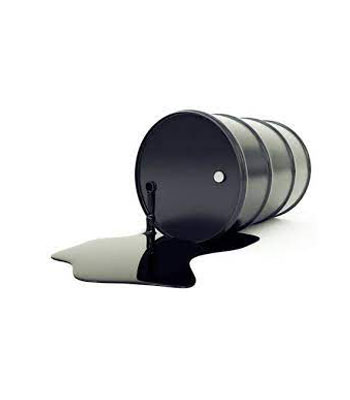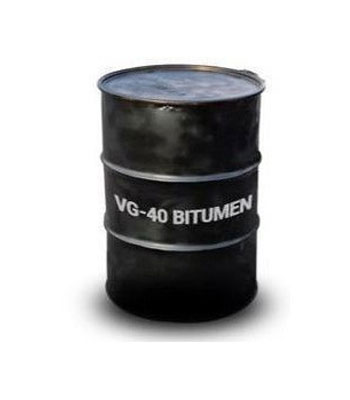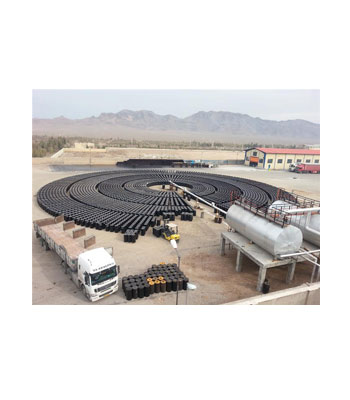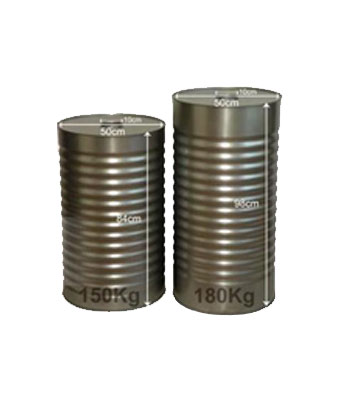Cutback- Cutback bitumen
$0.00Cutback Bitumen is by adding controlled amounts of petroleum solvent such as Kerosene, Gasole and Gasoline.
Base on reduce of bitumen viscosity for spraying in ambient temperature for several application such as Asphalt Pavement Construction, Maintenance,Prime and Tack Coating and …
Base on the time of curing after spraying, Cutback bitumen classification as Rapild Curing(RC), Medium Curing (MC) and Slow Curing (SC)
Cutback- Cutback bitumen
$0.00Cutback Bitumen is by adding controlled amounts of petroleum solvent such as Kerosene, Gasole and Gasoline.
Base on reduce of bitumen viscosity for spraying in ambient temperature for several application such as Asphalt Pavement Construction, Maintenance,Prime and Tack Coating and …
Base on the time of curing after spraying, Cutback bitumen classification as Rapild Curing(RC), Medium Curing (MC) and Slow Curing (SC)
Cutback- Cutback bitumen
$0.00Cutback Bitumen is by adding controlled amounts of petroleum solvent such as Kerosene, Gasole and Gasoline.
Base on reduce of bitumen viscosity for spraying in ambient temperature for several application such as Asphalt Pavement Construction, Maintenance,Prime and Tack Coating and …
Base on the time of curing after spraying, Cutback bitumen classification as Rapild Curing(RC), Medium Curing (MC) and Slow Curing (SC)
Emulsions-Bitumen & Tar
$0.00Whatever the end use, application conditions usually require bitumen to behave as a mobile liquid. In principle, there are three ways to make highly-viscous bitumen into a low-viscosity liquid:
- Heat it
- Dissolve it in solvents
- Emulsify it
Bitumen emulsions are two-phased systems consisting of bitumen, water, and one or more additives to assist in formation and stabilization and to modify the properties of the emulsion. The bitumen is dispersed throughout the water phase in the form of discrete globules, typically 0.1 to 50 microns in diameter, which are held in suspension by electrostatic charges stabilized by an emulsifier. Bitumen emulsions can be divided into four classes. The first two are, by far, the most widely used:
- Cationic emulsions
- Anionic emulsions
- Non-ionic emulsions
- Clay-stabilized emulsions
The terms anionic and cationic stem from the electrical charges on the bitumen globules. This identification system originates from one of the fundamental laws of electricity – like charges repel, unlike charges attract. If an electrical potential is applied between two electrodes immersed in an emulsion containing negatively charged particles of bitumen, they will migrate to the anode. In that case, the emulsion is described as “anionic”. Conversely, in a system containing positively charged particles bitumen, they will move to the cathode and the emulsion is described as “cationic”. The bitumen particles in a non-ionic emulsion are neutral and, therefore, will not migrate to either pole. These types of emulsion are rarely
Bitumen emulsions are divided into three categories in terms of setting:
- Rapid-setting (RS)
- Medium-setting (MS)
- Slow-setting (SS)
Cationic RS emulsion is currently the widely used category in Iran. Emulsion setting is irreversible phenomenon which may occur due to the evaporation of the water phase or the attraction of water by stone materials. Throughout this phenomenon, the water phase disappears and bitumen particles will have less space. Then, the bitumen gradually moves towards the surface or coats the aggregate.
Cationic Emulsions
These emulsions are known as cationic because their bitumen aggregates carry positive charges by using Ammonium salts or Amines compounds. They are divided into the following categories:
Emulsions-Bitumen & Tar
$0.00Whatever the end use, application conditions usually require bitumen to behave as a mobile liquid. In principle, there are three ways to make highly-viscous bitumen into a low-viscosity liquid:
- Heat it
- Dissolve it in solvents
- Emulsify it
Bitumen emulsions are two-phased systems consisting of bitumen, water, and one or more additives to assist in formation and stabilization and to modify the properties of the emulsion. The bitumen is dispersed throughout the water phase in the form of discrete globules, typically 0.1 to 50 microns in diameter, which are held in suspension by electrostatic charges stabilized by an emulsifier. Bitumen emulsions can be divided into four classes. The first two are, by far, the most widely used:
- Cationic emulsions
- Anionic emulsions
- Non-ionic emulsions
- Clay-stabilized emulsions
The terms anionic and cationic stem from the electrical charges on the bitumen globules. This identification system originates from one of the fundamental laws of electricity – like charges repel, unlike charges attract. If an electrical potential is applied between two electrodes immersed in an emulsion containing negatively charged particles of bitumen, they will migrate to the anode. In that case, the emulsion is described as “anionic”. Conversely, in a system containing positively charged particles bitumen, they will move to the cathode and the emulsion is described as “cationic”. The bitumen particles in a non-ionic emulsion are neutral and, therefore, will not migrate to either pole. These types of emulsion are rarely
Bitumen emulsions are divided into three categories in terms of setting:
- Rapid-setting (RS)
- Medium-setting (MS)
- Slow-setting (SS)
Cationic RS emulsion is currently the widely used category in Iran. Emulsion setting is irreversible phenomenon which may occur due to the evaporation of the water phase or the attraction of water by stone materials. Throughout this phenomenon, the water phase disappears and bitumen particles will have less space. Then, the bitumen gradually moves towards the surface or coats the aggregate.
Cationic Emulsions
These emulsions are known as cationic because their bitumen aggregates carry positive charges by using Ammonium salts or Amines compounds. They are divided into the following categories:
Emulsions-Bitumen & Tar
$0.00Whatever the end use, application conditions usually require bitumen to behave as a mobile liquid. In principle, there are three ways to make highly-viscous bitumen into a low-viscosity liquid:
- Heat it
- Dissolve it in solvents
- Emulsify it
Bitumen emulsions are two-phased systems consisting of bitumen, water, and one or more additives to assist in formation and stabilization and to modify the properties of the emulsion. The bitumen is dispersed throughout the water phase in the form of discrete globules, typically 0.1 to 50 microns in diameter, which are held in suspension by electrostatic charges stabilized by an emulsifier. Bitumen emulsions can be divided into four classes. The first two are, by far, the most widely used:
- Cationic emulsions
- Anionic emulsions
- Non-ionic emulsions
- Clay-stabilized emulsions
The terms anionic and cationic stem from the electrical charges on the bitumen globules. This identification system originates from one of the fundamental laws of electricity – like charges repel, unlike charges attract. If an electrical potential is applied between two electrodes immersed in an emulsion containing negatively charged particles of bitumen, they will migrate to the anode. In that case, the emulsion is described as “anionic”. Conversely, in a system containing positively charged particles bitumen, they will move to the cathode and the emulsion is described as “cationic”. The bitumen particles in a non-ionic emulsion are neutral and, therefore, will not migrate to either pole. These types of emulsion are rarely
Bitumen emulsions are divided into three categories in terms of setting:
- Rapid-setting (RS)
- Medium-setting (MS)
- Slow-setting (SS)
Cationic RS emulsion is currently the widely used category in Iran. Emulsion setting is irreversible phenomenon which may occur due to the evaporation of the water phase or the attraction of water by stone materials. Throughout this phenomenon, the water phase disappears and bitumen particles will have less space. Then, the bitumen gradually moves towards the surface or coats the aggregate.
Cationic Emulsions
These emulsions are known as cationic because their bitumen aggregates carry positive charges by using Ammonium salts or Amines compounds. They are divided into the following categories:
ISOGUM-DA -Bitumen & Tar
Iso Gam, Waterproofing of buildings, which was traditionally done with asphalt and bitumen until the last forty years, with the advent of waterproofing and the advantages of this type of insulation, these insulations gradually gave way to these. Today, in most buildings, whether in the foundation stage or in the insulation of walls, services, and roofs, insulation is done with a layer of iso gum waterproofing.
ISOGUM-DA -Bitumen & Tar
Iso Gam, Waterproofing of buildings, which was traditionally done with asphalt and bitumen until the last forty years, with the advent of waterproofing and the advantages of this type of insulation, these insulations gradually gave way to these. Today, in most buildings, whether in the foundation stage or in the insulation of walls, services, and roofs, insulation is done with a layer of iso gum waterproofing.
ISOGUM-DA -Bitumen & Tar
Iso Gam, Waterproofing of buildings, which was traditionally done with asphalt and bitumen until the last forty years, with the advent of waterproofing and the advantages of this type of insulation, these insulations gradually gave way to these. Today, in most buildings, whether in the foundation stage or in the insulation of walls, services, and roofs, insulation is done with a layer of iso gum waterproofing.
ISOGUM-NI – Bitumen & Tar
$0.00Iso Gam, Waterproofing of buildings, which was traditionally done with asphalt and bitumen until the last forty years, with the advent of waterproofing and the advantages of this type of insulation, these insulations gradually gave way to these. Today, in most buildings, whether in the foundation stage or in the insulation of walls, services, and roofs, insulation is done with a layer of iso gum waterproofing.
ISOGUM-NI – Bitumen & Tar
$0.00Iso Gam, Waterproofing of buildings, which was traditionally done with asphalt and bitumen until the last forty years, with the advent of waterproofing and the advantages of this type of insulation, these insulations gradually gave way to these. Today, in most buildings, whether in the foundation stage or in the insulation of walls, services, and roofs, insulation is done with a layer of iso gum waterproofing.
ISOGUM-NI – Bitumen & Tar
$0.00Iso Gam, Waterproofing of buildings, which was traditionally done with asphalt and bitumen until the last forty years, with the advent of waterproofing and the advantages of this type of insulation, these insulations gradually gave way to these. Today, in most buildings, whether in the foundation stage or in the insulation of walls, services, and roofs, insulation is done with a layer of iso gum waterproofing.
ISOGUM-SE -Bitumen & Tar
$0.00Iso Gam, Waterproofing of buildings, which was traditionally done with asphalt and bitumen until the last forty years, with the advent of waterproofing and the advantages of this type of insulation, these insulations gradually gave way to these. Today, in most buildings, whether in the foundation stage or in the insulation of walls, services, and roofs, insulation is done with a layer of iso gum waterproofing.
ISOGUM-SE -Bitumen & Tar
$0.00Iso Gam, Waterproofing of buildings, which was traditionally done with asphalt and bitumen until the last forty years, with the advent of waterproofing and the advantages of this type of insulation, these insulations gradually gave way to these. Today, in most buildings, whether in the foundation stage or in the insulation of walls, services, and roofs, insulation is done with a layer of iso gum waterproofing.
ISOGUM-SE -Bitumen & Tar
$0.00Iso Gam, Waterproofing of buildings, which was traditionally done with asphalt and bitumen until the last forty years, with the advent of waterproofing and the advantages of this type of insulation, these insulations gradually gave way to these. Today, in most buildings, whether in the foundation stage or in the insulation of walls, services, and roofs, insulation is done with a layer of iso gum waterproofing.
Modified Bitumen|Bitumen & Tar
$0.00This Type is Produced According to Customers’ Request, Pavements Designed and Constructed for Heavy Duty Traffic and Extreme Weather Conditions Require Specially Designed Engineered Bitumen Grades. By Changing the Characteristics of Normal Bitumen with Change of Process Condition or and the Addition of a Modifier such as Polymer.
Modified Bitumen|Bitumen & Tar
$0.00This Type is Produced According to Customers’ Request, Pavements Designed and Constructed for Heavy Duty Traffic and Extreme Weather Conditions Require Specially Designed Engineered Bitumen Grades. By Changing the Characteristics of Normal Bitumen with Change of Process Condition or and the Addition of a Modifier such as Polymer.
Modified Bitumen|Bitumen & Tar
$0.00This Type is Produced According to Customers’ Request, Pavements Designed and Constructed for Heavy Duty Traffic and Extreme Weather Conditions Require Specially Designed Engineered Bitumen Grades. By Changing the Characteristics of Normal Bitumen with Change of Process Condition or and the Addition of a Modifier such as Polymer.
Penetration Grades
$0.00In the past, the penetration index was defined based on the assumption that thermal sensitivity in the bitumen used in road construction was zero. Bitumen is a thermoplastic material, meaning that it becomes pliable or moldable above a specific temperature and returns to a solid state upon cooling.
Penetration-grade bitumen is mainly used in road surfacing. Bitumen with lower penetration grade is used in the regions with warm climate while higher penetration grade is used in colder weather.
Pasargad Oil Company is capable of producing different grades of road surfacing bitumen in compliance with national and international standards in its six plants located at Tehran, Tabriz, Arak, Shiraz, Bandar Abbas, and Abadan refineries. Penetration rate bitumen is graded based on penetration and softening point tests. This table describes the physical properties of penetration-grade bitumen based on European standards. Penetration-grade bitumen is mainly used in road construction. During the last two decades of the 20th century, most road construction projects showed inclination for solid bitumen which results in more effective asphalt.
Penetration Grades
$0.00In the past, the penetration index was defined based on the assumption that thermal sensitivity in the bitumen used in road construction was zero. Bitumen is a thermoplastic material, meaning that it becomes pliable or moldable above a specific temperature and returns to a solid state upon cooling.
Penetration-grade bitumen is mainly used in road surfacing. Bitumen with lower penetration grade is used in the regions with warm climate while higher penetration grade is used in colder weather.
Pasargad Oil Company is capable of producing different grades of road surfacing bitumen in compliance with national and international standards in its six plants located at Tehran, Tabriz, Arak, Shiraz, Bandar Abbas, and Abadan refineries. Penetration rate bitumen is graded based on penetration and softening point tests. This table describes the physical properties of penetration-grade bitumen based on European standards. Penetration-grade bitumen is mainly used in road construction. During the last two decades of the 20th century, most road construction projects showed inclination for solid bitumen which results in more effective asphalt.
Penetration Grades
$0.00In the past, the penetration index was defined based on the assumption that thermal sensitivity in the bitumen used in road construction was zero. Bitumen is a thermoplastic material, meaning that it becomes pliable or moldable above a specific temperature and returns to a solid state upon cooling.
Penetration-grade bitumen is mainly used in road surfacing. Bitumen with lower penetration grade is used in the regions with warm climate while higher penetration grade is used in colder weather.
Pasargad Oil Company is capable of producing different grades of road surfacing bitumen in compliance with national and international standards in its six plants located at Tehran, Tabriz, Arak, Shiraz, Bandar Abbas, and Abadan refineries. Penetration rate bitumen is graded based on penetration and softening point tests. This table describes the physical properties of penetration-grade bitumen based on European standards. Penetration-grade bitumen is mainly used in road construction. During the last two decades of the 20th century, most road construction projects showed inclination for solid bitumen which results in more effective asphalt.
Performance Grade
$0.00Performance Grade Bitumen is the Latest Standard of bitumen. It is new method bitumen standard which based on varying temperatures. This method studies the mechanical specifications of bitumen. Since in this method, a temperature range is defined for bitumen, the consumer can easily choose the desired product. Performance Grade determined for polymer modified bitumen and pure bitumen based on environmental conditions and temperature. The wider PG Grades Range the higher resistance and more favorable specifications.
Performance Grade
$0.00Performance Grade Bitumen is the Latest Standard of bitumen. It is new method bitumen standard which based on varying temperatures. This method studies the mechanical specifications of bitumen. Since in this method, a temperature range is defined for bitumen, the consumer can easily choose the desired product. Performance Grade determined for polymer modified bitumen and pure bitumen based on environmental conditions and temperature. The wider PG Grades Range the higher resistance and more favorable specifications.
Performance Grade
$0.00Performance Grade Bitumen is the Latest Standard of bitumen. It is new method bitumen standard which based on varying temperatures. This method studies the mechanical specifications of bitumen. Since in this method, a temperature range is defined for bitumen, the consumer can easily choose the desired product. Performance Grade determined for polymer modified bitumen and pure bitumen based on environmental conditions and temperature. The wider PG Grades Range the higher resistance and more favorable specifications.
Performance Grade (PG)-Bitumen & Tar
$0.00From October 1987 to March 1993, Strategic Highway Research Program (SHRP) was conducted in the United States. The program was focused on the development of new methods for assessing the performance of bitumen binders. The research resulted in the development of a new method known as Superior Performing Asphalt Pavements (Superpave).
The main specifications of this method included:
Using the efficiency criterion for bitumen binders and asphalt concrete
Considering climatic conditions in application of bitumen
The problems studied in this method are as follows:
Winter low-temperature bitumen cracking not related to loading
Bitumen fatigue cracking due to loading
Summer high-temperature bitumen deformation due to loading
The primary objective behind determining the new specifications was to facilitate the purchase of bitumen products of better quality because these specifications will clearly describe the product for potential buyers. The new specifications also guarantee the proper performance of bitumen in coating. Climatic conditions are important factors in the efficiency of coating, but limited research has been conducted on this issue due to limited time and quite similar weather conditions. Moreover, they would not be precise if the loading factor is not taken into consideration. The producers all around the world, has been started to produce this type of bitumen which POC is a prominent in this regard. Having installed SHRP systems, Pasargad Oil Company is capable of selling bitumen to its customers based on PG method. It worth to remind that in the past, penetration was used as a factor for bitumen grading. In performance grade, the focus is on the mechanical specification of bitumen while in penetration grade, experimental parameters are involved. In Iran, pen-grade is more common, but in some cases, PG has better be used for a better performance. Today, a PG is defined for polymer modified bitumen and pure bitumen based on environmental conditions and temperature. A wider PG range means higher resistance and more favorable specifications. Pasargad Oil Company has the capacity to produce all these grades. This company first conducted climate zoning in Iran to specify the appropriate bitumen for different geographical zones.
Performance Grade (PG)-Bitumen & Tar
$0.00From October 1987 to March 1993, Strategic Highway Research Program (SHRP) was conducted in the United States. The program was focused on the development of new methods for assessing the performance of bitumen binders. The research resulted in the development of a new method known as Superior Performing Asphalt Pavements (Superpave).
The main specifications of this method included:
Using the efficiency criterion for bitumen binders and asphalt concrete
Considering climatic conditions in application of bitumen
The problems studied in this method are as follows:
Winter low-temperature bitumen cracking not related to loading
Bitumen fatigue cracking due to loading
Summer high-temperature bitumen deformation due to loading
The primary objective behind determining the new specifications was to facilitate the purchase of bitumen products of better quality because these specifications will clearly describe the product for potential buyers. The new specifications also guarantee the proper performance of bitumen in coating. Climatic conditions are important factors in the efficiency of coating, but limited research has been conducted on this issue due to limited time and quite similar weather conditions. Moreover, they would not be precise if the loading factor is not taken into consideration. The producers all around the world, has been started to produce this type of bitumen which POC is a prominent in this regard. Having installed SHRP systems, Pasargad Oil Company is capable of selling bitumen to its customers based on PG method. It worth to remind that in the past, penetration was used as a factor for bitumen grading. In performance grade, the focus is on the mechanical specification of bitumen while in penetration grade, experimental parameters are involved. In Iran, pen-grade is more common, but in some cases, PG has better be used for a better performance. Today, a PG is defined for polymer modified bitumen and pure bitumen based on environmental conditions and temperature. A wider PG range means higher resistance and more favorable specifications. Pasargad Oil Company has the capacity to produce all these grades. This company first conducted climate zoning in Iran to specify the appropriate bitumen for different geographical zones.
Performance Grade (PG)-Bitumen & Tar
$0.00From October 1987 to March 1993, Strategic Highway Research Program (SHRP) was conducted in the United States. The program was focused on the development of new methods for assessing the performance of bitumen binders. The research resulted in the development of a new method known as Superior Performing Asphalt Pavements (Superpave).
The main specifications of this method included:
Using the efficiency criterion for bitumen binders and asphalt concrete
Considering climatic conditions in application of bitumen
The problems studied in this method are as follows:
Winter low-temperature bitumen cracking not related to loading
Bitumen fatigue cracking due to loading
Summer high-temperature bitumen deformation due to loading
The primary objective behind determining the new specifications was to facilitate the purchase of bitumen products of better quality because these specifications will clearly describe the product for potential buyers. The new specifications also guarantee the proper performance of bitumen in coating. Climatic conditions are important factors in the efficiency of coating, but limited research has been conducted on this issue due to limited time and quite similar weather conditions. Moreover, they would not be precise if the loading factor is not taken into consideration. The producers all around the world, has been started to produce this type of bitumen which POC is a prominent in this regard. Having installed SHRP systems, Pasargad Oil Company is capable of selling bitumen to its customers based on PG method. It worth to remind that in the past, penetration was used as a factor for bitumen grading. In performance grade, the focus is on the mechanical specification of bitumen while in penetration grade, experimental parameters are involved. In Iran, pen-grade is more common, but in some cases, PG has better be used for a better performance. Today, a PG is defined for polymer modified bitumen and pure bitumen based on environmental conditions and temperature. A wider PG range means higher resistance and more favorable specifications. Pasargad Oil Company has the capacity to produce all these grades. This company first conducted climate zoning in Iran to specify the appropriate bitumen for different geographical zones.
VG Bitumen-Bitumen & Tar
$0.00Bitumen is graded based on absolute viscosity at 60 ºC or kinematic viscosity at 135 ºC. The SI physical unit of dynamic viscosity is Poise and kinematic viscosity is expressed in Centi Stokes. Pure bitumen has been graded based on AASHTO-M226 and ASTM-D3381 standards. Tables 1-1 to 1-6 indicate tests and criteria.
VG Bitumen-Bitumen & Tar
$0.00Bitumen is graded based on absolute viscosity at 60 ºC or kinematic viscosity at 135 ºC. The SI physical unit of dynamic viscosity is Poise and kinematic viscosity is expressed in Centi Stokes. Pure bitumen has been graded based on AASHTO-M226 and ASTM-D3381 standards. Tables 1-1 to 1-6 indicate tests and criteria.
VG Bitumen-Bitumen & Tar
$0.00Bitumen is graded based on absolute viscosity at 60 ºC or kinematic viscosity at 135 ºC. The SI physical unit of dynamic viscosity is Poise and kinematic viscosity is expressed in Centi Stokes. Pure bitumen has been graded based on AASHTO-M226 and ASTM-D3381 standards. Tables 1-1 to 1-6 indicate tests and criteria.
Viscosity Grade Bitumen
$0.00This type of bitumen is utilized to stain cracked surfaces and spray various applications. It can be an alternative for the penetration grade bitumen 80-100 in very cold areas. This category of bitumen is also employed to produce emulsion and modified bitumen.
Viscosity Grade Bitumen
$0.00This type of bitumen is utilized to stain cracked surfaces and spray various applications. It can be an alternative for the penetration grade bitumen 80-100 in very cold areas. This category of bitumen is also employed to produce emulsion and modified bitumen.
Viscosity Grade Bitumen
$0.00This type of bitumen is utilized to stain cracked surfaces and spray various applications. It can be an alternative for the penetration grade bitumen 80-100 in very cold areas. This category of bitumen is also employed to produce emulsion and modified bitumen.
Viscosity Grade Bitumen & Tar Products
$0.00Viscosity Grade Bitumen which is produced during the process of oxidation of vacuum bottom in distillation tower and is categorized based on absolute viscosity at 60 ºC or kinematic viscosity at 135 ºC. There are four grades VG-10, VG-20, VG-30 & VG-40. The main common usage of VG is in road construction, water proofing, building construction industries and also in cutback bitumen production.
Product Types
- Viscosity Grade 40-Viscosity Grade
- Viscosity Grade 30-Viscosity Grade
- Viscosity Grade 20-Viscosity Grade
- Viscosity Grade 10-Viscosity Grade
Viscosity Grade Bitumen & Tar Products
$0.00Viscosity Grade Bitumen which is produced during the process of oxidation of vacuum bottom in distillation tower and is categorized based on absolute viscosity at 60 ºC or kinematic viscosity at 135 ºC. There are four grades VG-10, VG-20, VG-30 & VG-40. The main common usage of VG is in road construction, water proofing, building construction industries and also in cutback bitumen production.
Product Types
- Viscosity Grade 40-Viscosity Grade
- Viscosity Grade 30-Viscosity Grade
- Viscosity Grade 20-Viscosity Grade
- Viscosity Grade 10-Viscosity Grade



